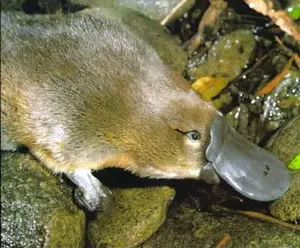
Scientists are usually hard to surprise. But when a skin of a killed platypus was first sent from Australia to England, British zoologists thought the residents of that distant and still unexplored continent were playing a prank on them: they believed someone had sent the skin of some animal and attached a regular duck bill to it.
However, as it later became clear, the platypus resembles a duck not only because of its bill. This creature lays eggs, has webbed feet, and thrives in water, foraging for food at the bottom of bodies of water.
And what’s even more astonishing: the platypus has hardly changed over millions of years. For this reason, scientists often refer to it as a “living fossil.”
